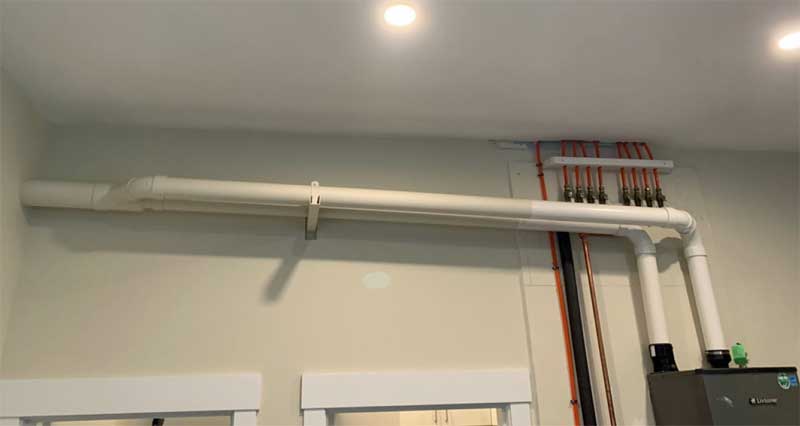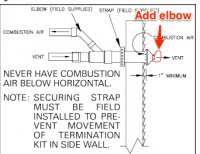Hi all -
I've got a 110k BTU Lochinvar combi-boiler installed in garage. It vents via (2) 3" PVC pipes which combine into a concentric vent pipe that penetrates the wall.
The unit is significantly louder than I had hoped, and part of the issues is just site-location (i.e. my neighbors bedroom window is about 10' away....).
I know its going to make some noise, but wondering what I can do to dampen the noise. The installer had said something about basically making a "glass pack" type muffler, involving a wider diameter PVC pipe packed with something to help absorb some sound.
I have very good access to the pipes before they enter the concentric vent. There's about 8' of (sloped) exposed pipe.

Wondering if anyone has any tips on constructing something like that. A couple of specific questions:
-What would you pack the muffler with?
-Would you do both intake and exhaust, or would one be the bigger culprit?
-I assume you'd use a 3" to 4" (or 3" to 5?") adapter, and leave the inside pipe in place, but with lots and lots of holes/slots in it. But how can you keep the 3" pipe in place? Wondering if there are some more-obscure pipe fittings that might accomplish this.
Anyway thanks in advance -- new to this forum and am amazed that I didn't know about this sooner.
I've got a 110k BTU Lochinvar combi-boiler installed in garage. It vents via (2) 3" PVC pipes which combine into a concentric vent pipe that penetrates the wall.
The unit is significantly louder than I had hoped, and part of the issues is just site-location (i.e. my neighbors bedroom window is about 10' away....).
I know its going to make some noise, but wondering what I can do to dampen the noise. The installer had said something about basically making a "glass pack" type muffler, involving a wider diameter PVC pipe packed with something to help absorb some sound.
I have very good access to the pipes before they enter the concentric vent. There's about 8' of (sloped) exposed pipe.

Wondering if anyone has any tips on constructing something like that. A couple of specific questions:
-What would you pack the muffler with?
-Would you do both intake and exhaust, or would one be the bigger culprit?
-I assume you'd use a 3" to 4" (or 3" to 5?") adapter, and leave the inside pipe in place, but with lots and lots of holes/slots in it. But how can you keep the 3" pipe in place? Wondering if there are some more-obscure pipe fittings that might accomplish this.
Anyway thanks in advance -- new to this forum and am amazed that I didn't know about this sooner.

